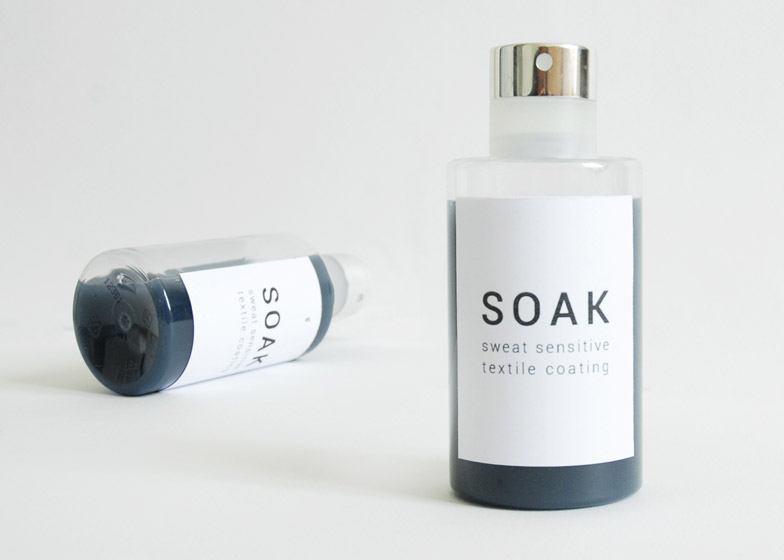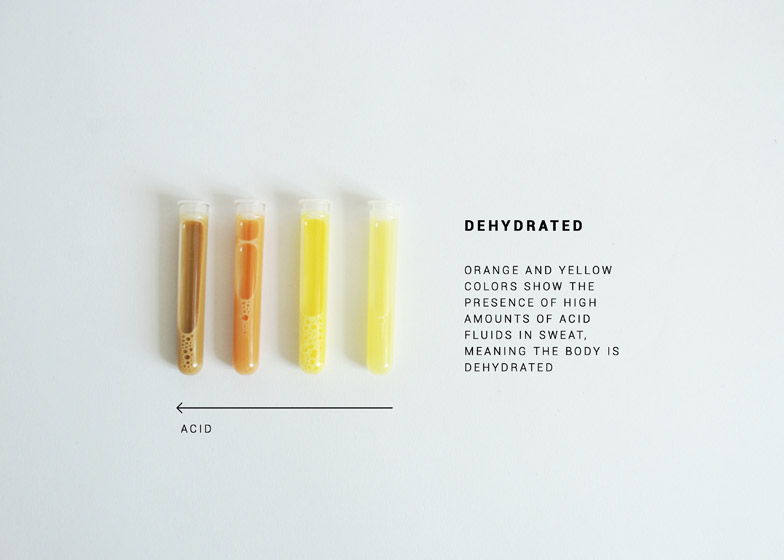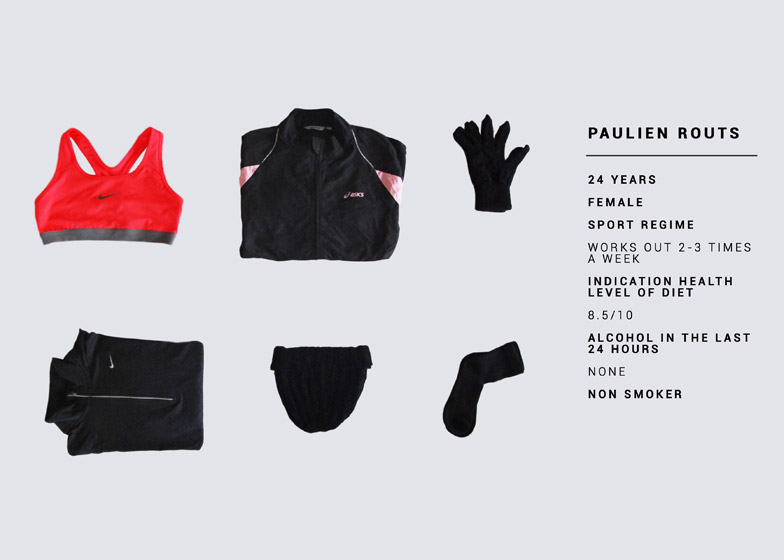Dutch researcher Paulien Routs has worked with conceptual design studio Droog to develop a spray for activewear that monitors wearers' hydration levels by reacting to their sweat (+ slideshow).
Routs, whose research is often focused on exploring technology and how it relates to the body, made the textile coating in partnership with Droog as part of its Reality Tank programme.
The SOAK spray was developed in collaboration with cosmetics lab Thewa Innovation, aesthetic doctor Annebeth Kroeskop, and the Dutch Cosmetics Association.
The coating works by reacting to acidity levels in sweat, creating a visual representation of how dehydrated the wearer's body is by changing colour.
The reaction covers a spectrum of colours, with orange and yellow representing high acid levels – meaning the wearer is suffering from dehydration – while green and blue responses show sufficient levels of hydration.
In tests carried out, Routs applied SOAK to participants' clothes both before and after a workout, as well as tracking their food and drink intake to show how consumption affected their body's response to exercise.
"In order to create a new way for the wearer to interact with the body and therewith create a new logic in dressing, the fashion product is designed to address and emphasise the body's own signals and reactions to our environment and activities," said Routs in a statement.
"Sweat isn't only a process that the body uses for thermoregulation, but it also contains different values and substances like acids and minerals," she added. "These different sorts of acids and minerals and the amount of them being present in our sweat can offer insight in the status of the body's health."
While the product is still at an early stage, Routs is exploring possible uses for SOAK, and the role it could play in the world of sport and health. "Unlike other body monitoring products such as sport watches, this coating communicates body centred information to its wearer," she said. "It creates a quantified self that is focused on body-centred result rather than numbers that make you compete with others or yourself."
Related content: see more textile design
The Reality Tank initiative was launched in 2013 by the Droog Foundation, which aims to opens up new roles for design by uniting researchers with commercial partners.
Routs isn't the only one experimenting with new possibilities for textiles, with Google weaving smartphone interfaces into clothes and Amy Congdon discovering ways tissue engineering could be incorporated into textile design.
Infusing textiles with liquids can also have other benefits. Design Academy Eindhoven graduate Alexandra Stück has previously added different remedial herbal scents into a range of fabrics to make their wearers feel calm, focused or horny.












